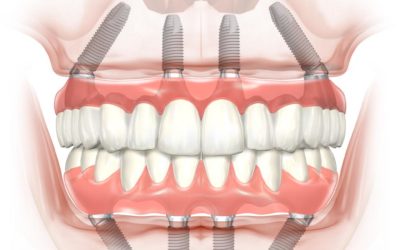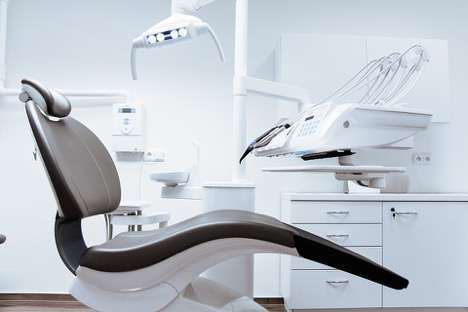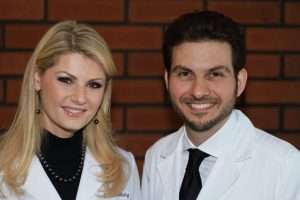How to Fix Receding Gums
When you smile, is your gum line higher than it should be? Do you have a “toothy” grin? A raised gum line is usually caused by recession of the gum tissue surrounding your teeth. But without enough gum tissue to protect your smile, you can be at an increased risk of everything from cavities to tooth loss, much less the aesthetic concerns it causes.
What Causes Receding Gums?
Aggressive Tooth Brushing—Do you brush your teeth too hard or use a stiff-bristled toothbrush? If the bristles on your brush are starting to splay outward (even if they’re soft) then you’re brushing too aggressively. Not only will severe scrubbing start to wear away your gums, but it can also wear notches in your tooth enamel. Ideally, you want to use a soft toothbrush and only apply mild pressure that’s light enough to cause gentle blanching. Nothing more.
Periodontal Disease—In most cases, untreated gum disease is the most likely cause of receding gums. When we don’t remove bacteria along or under the gums each day, the tissues eventually become infected and pull away from the tooth. The further the tissues detach, the deeper areas of tartar buildup and plaque we tend to get. Hence why periodontal infections need to be treated as early as possible. More aggressive infections might require open flap scaling in addition to treating the gum recession.
Trauma/Injury—Similar to overzealous toothbrushing, a physical injury to your mouth—like from an athletic accident or automobile wreck—can cause tissue damage or scarring around certain teeth.
Tobacco Use—If you smoke or use chewing tobacco, the fumes and dip/snuff physically alter the tissues around your teeth. Even smokeless tobacco has tiny abrasives in it (to improve nicotine uptake) which can cause severe gum recession where you hold your dip each day.
Tooth Misalignment or Orthodontic Appliances—When a tooth is severely misaligned or aggressive/fast orthodontic treatment is used, there is a chance that the gum tissue around that tooth may start to recede. This is why a crooked tooth might appear long or have exposed root surfaces when neighboring teeth do not.
Can Gum Recession Get Worse?
Left alone, areas of gum recession do not and cannot repair themselves. While you can prevent receding gums through good home care, poor dental hygiene will only allow tissue loss to get worse. The difference may seem minimal from one visit to the next, but over several months or years, your tissue loss will also compromise the bone that supports your teeth. Recession is a serious dental problem that is best addressed in the early stages before serious bone loss and tooth mobility occur.
When to Treat Receding Gums
How can you tell when the best time to treat receding gums is? The short answer is, “it depends.”
You might decide to wait until severe cases of recession are causing visible black triangles or spaces between your teeth. These areas can be unattractive, but they also harbor food and tartar buildup, which contribute to gum disease.
Or maybe you’ve already completed gum disease treatment (like a deep cleaning) and now that the inflammation has died down, you notice at least one tooth has a visible root surface.
Left untreated, exposed root surfaces don’t just put you at risk for tooth mobility. They also drastically raise your chances of root-surface cavities and tooth sensitivity.
Choosing to jump-start the healing process eliminates gum problems before they cause further damage.
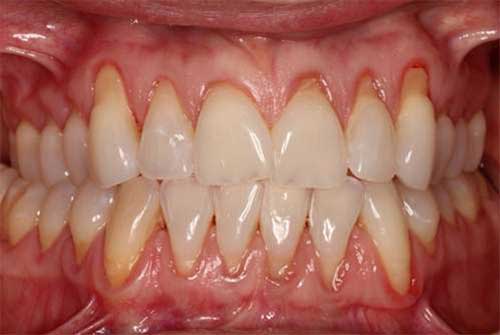
Advanced gum recession shown above
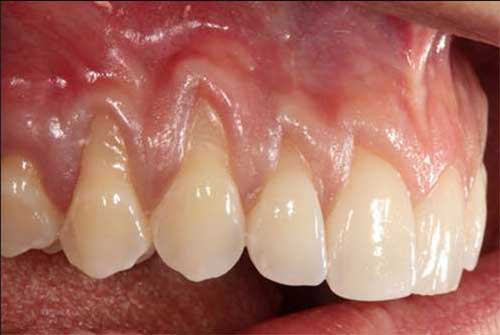
Receding gums before treatment shown above
How to Treat Gum Recession
Our Los Angeles specialty clinic offers two types of therapies to treat gum recession. One is conventional gum surgery, referred to as grafting. The other is a non-surgical alternative called RejuvaGum Lift™ that uses your body’s own stem cells to regenerate gum tissue.
Additionally, you’ll want to identify the cause of your gum recession and take steps to address those issues. If you treat receding gums, the affected gum tissue can continue to creep back again when the original cause is not addressed.
Using Grafts to Treat Receding Gums
One of the most direct ways to counteract tissue loss from gum disease or trauma is with a gum graft. Gum grafts use tissue from another part of your mouth (usually the roof) or an allograft material to physically re-cover the exposed tooth roots. Gum grafts are essentially like adding new skin in an area where there isn’t any. Cared for properly, your gum graft will “take” and attach to both the affected teeth as well as the immediately adjacent skin.
Traditional grafting is fairly common when gum recession occurs from physical trauma or cases of serious gum disease you had in the past. Once the tissues in that area are healthy—usually following scaling and root planing—a graft may be needed to stabilize your smile and prevent tooth loss.
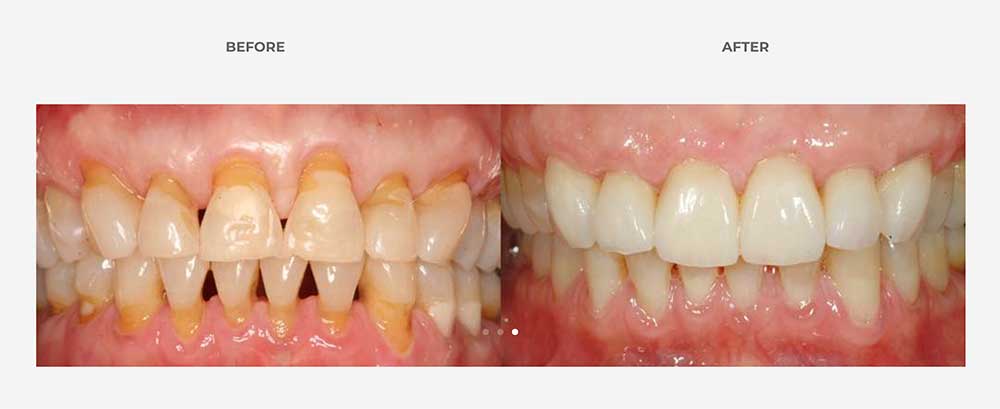
RejuvaGum Lift™ Gum Graft Alternative
Are you looking for a non-surgical or minimally invasive option for treating gingival recession? A lot of people have heard of the “pinhole” surgical technique, but pinhole gum surgery still involves stretching the gum tissues. Instead, our Los Angeles gum expert uses a surgical alternative called the RejuvaGum Lift™.
During a RejuvaGum Lift™ procedure, we take your body’s own blood clotting, fibrin (PRF), and growth factors from a small vial of your blood and separate them in a centrifuge. Those cells are then placed directly behind the receding gums, telling your body’s natural tissues to regrow themselves. PRF techniques are scientifically proven to help regrow tissues and cartilage in other areas of the body. Today, we can also use them to promote better oral health and help receding gums grow back on their own. RejuvaGum Lift™ replaces the need for using graft tissue and is a comfortable procedure to complete.
Stop Receding Gums
Exposed tooth roots aren’t just unattractive, they’re dangerous to your oral health. At The Center for Advanced Periodontal and Implant Therapy, our soft tissue grafting and non-surgical treatments protect exposed roots to extend the lifetime of your smile.
Contact our gum specialists in Los Angeles today to reserve a gingival recession consultation.
You May Also Like...
Graftless Dental Implant Solutions
Periodontitis is a gum infection that can cause you serious problems. The condition ranges in severity, but if left...
Periodontal Diseases: Causes and Prevention
What is Periodontal Diseases Usually the result of poor oral hygiene, periodontal diseases usually occur in adulthood...
New Receding Gums Treatment Shown In Los Angeles TV News Story
Receding gums can now be corrected with the RejuvaGum Lift™, a new procedure that eliminates the need to graft tissue...

